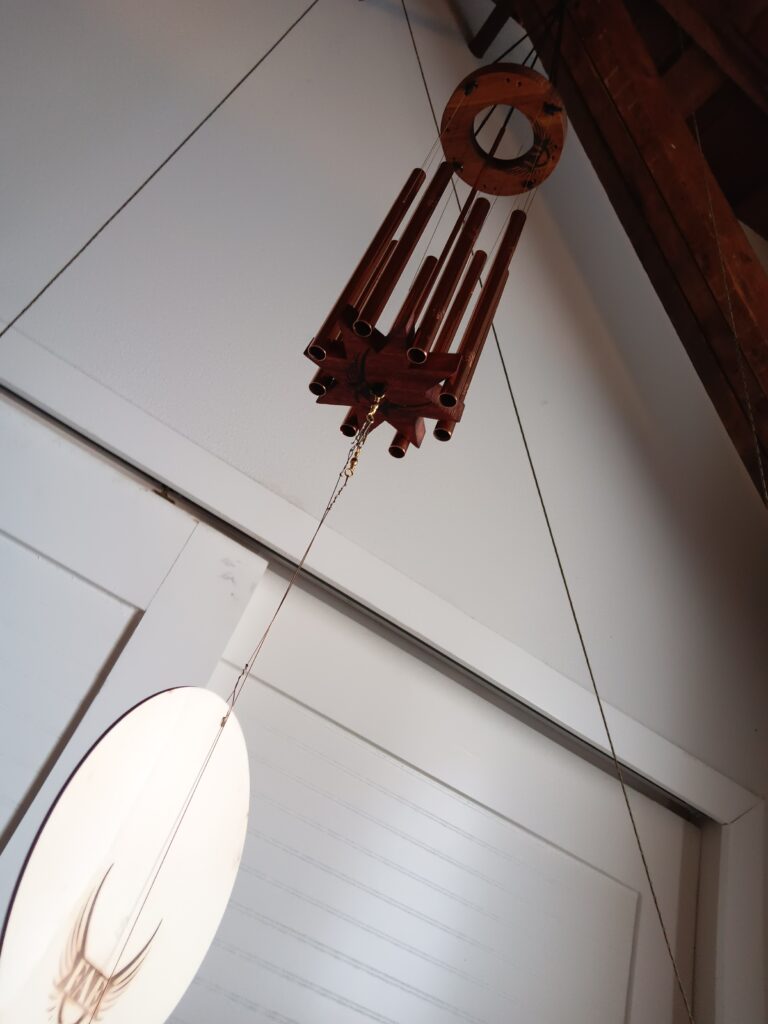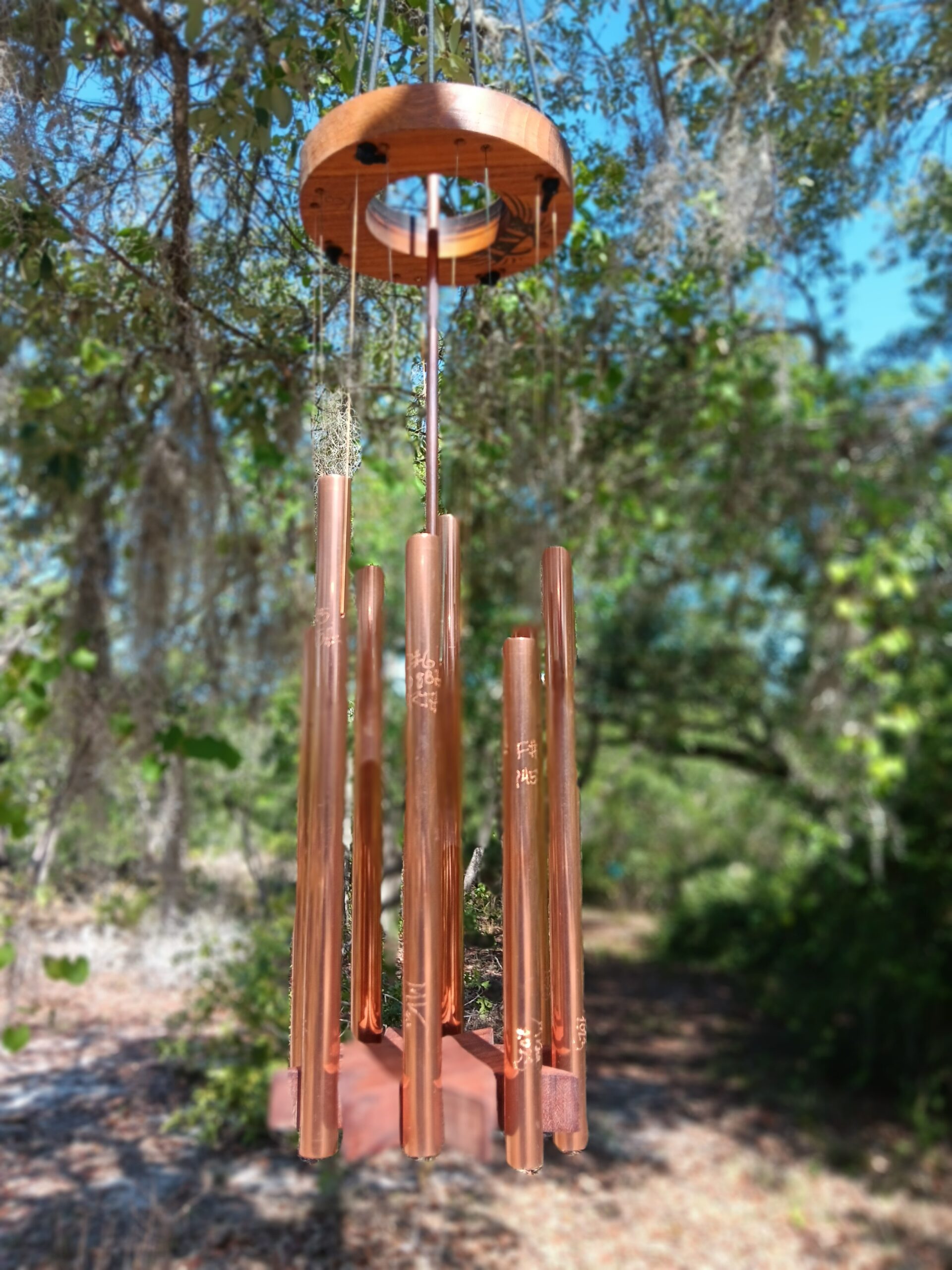
The gentle rustle of leaves, the soft whispers of the wind, and the melodious notes of wind chimes form a symphony that often evokes deep emotions. FAE St. Michael’s Healing Wind Chimes stand out not just as instruments of sound, but as profound symbols of remembrance for those we’ve lost.

A Symphony of Memories
When the breeze stirs the chimes of the FAE St. Michael’s Healing Wind Chime, each note seems to echo the laughter, wisdom, and love of departed loved ones. Every chime becomes a voice, reminding us of cherished memories and moments shared. In the stillness of a garden, balcony, or patio, these wind chimes serve as a gentle nudge, bringing forth recollections of days gone by.

FAE St. Michael’s Healing Wind Chime (3/4 in Copper w/ Cladding)
Artisan-crafted Wind Chime made of ethically sourced, copper-clad teak, military-grade lines, and eight 3/4in/19mm pure, U.S. copper pipes. Tuned using A4=432.1Hz with the intention to assist in healing.
Craftsmanship with Intention
Meticulously crafted and thoughtfully designed, these wind chimes resonate with the intent of healing. Tuned to A4=432.1Hz, a frequency that aligns with the Earth’s annual cycle and other cosmic harmonies, they promote internal healing, as it’s believed that these vibrations mirror the Earth’s revolution around the Sun. In the context of remembrance, this healing frequency offers solace to grieving hearts, creating an atmosphere of peace and reflection.

A Living Tribute
While photographs and keepsakes capture moments, FAE St. Michael’s Healing Wind Chimes capture the essence of a loved one’s spirit. They serve as a living tribute, constantly interacting with the environment, just as our loved ones did. The chimes’ music becomes a testament to the enduring impact of those who’ve passed on, ensuring that their presence is felt in every gentle sway and soothing note.

Conclusion
Grief is a journey, one with its peaks of pain and valleys of acceptance. FAE St. Michael’s Healing Wind Chimes offer companionship on this journey, filling the silence with harmonious reminders of love that never truly fades. As “remembrance wind chimes,” they ensure that even in absence, our loved ones remain an integral part of our lives, their memories dancing in the wind.

FAE St. Michael’s Healing Wind Chime (3/4 in Copper w/ Cladding)
Artisan-crafted Wind Chime made of ethically sourced, copper-clad teak, military-grade lines, and eight 3/4in/19mm pure, U.S. copper pipes. Tuned using A4=432.1Hz with the intention to assist in healing.







